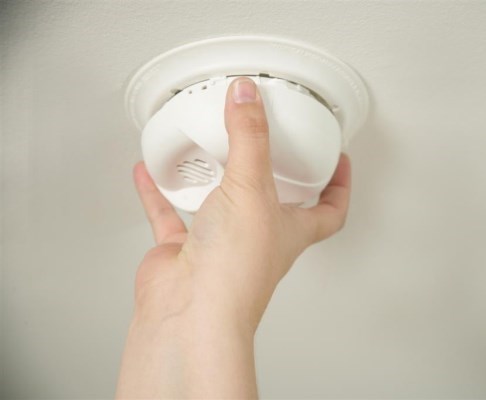Smoke Alarms
Did you know house fires kill 8 Canadians per week?
While house fires represent 40% of all fires, they are responsible for 73% of all fire deaths. Many of these deaths could have been prevented by having working smoke alarms.
Smoke alarms are required in every residential housing unit:
- at least one outside the bedroom(s)
- at least one on each level of your home including split levels

What type of alarm should I choose?
Power source |
|
Battery operated or hard-wired is acceptable. If you have existing hard-wired alarms, you cannot replace them with only battery operated alarms. In case of power failure, keep a back-up battery for your alarms. |
Technology |
|
You can purchase a smoke alarm with ionization or photo-electric technology. Photo-electric alarms may be quicker at detecting slow-smoldering fires. They are great for use near or in your kitchen. You will notice less false alarms. Ionization alarms may respond slightly faster to flaming-type fires. They are less expensive and good for all areas in your home. Mixed carbon monoxide and smoke alarms are great for outside sleeping areas. Carbon monoxide alarms are also required outside sleeping areas if fuel-fired appliances (natural gas / propane furnace, hot water tank, fireplace, etc.) are installed in your home. Go to Carbon Monoxide to learn more. |
Hush feature |
|
A hush feature allows the alarm to be temporarily silenced without disconnecting the power source. |
Installation requirements
It is important to install your smoke alarms properly. Follow the alarm manufacturer's instructions and the requirements below.
- Install an alarm on each storey of your home as well as outside sleeping areas.
- Smoke rises - install smoke alarms on your ceiling or on a wall close to your ceiling.
- If you sleep with your door closed, install an alarm inside your bedroom.
- Avoid putting your smoke alarms too close to:
- bathrooms
- windows
- ceiling fans
- heating and cooking appliances
Regularly check your alarms with Fire Prevention Canada
Follow the tips below to avoid house fires caused by faulty smoke alarms. These tips have been brought to you by Public Safety Canada in cooperation with the Canadian Association of Fire Chiefs and Fire Prevention Canada.
Monthly
Test your smoke alarm each month:
- Press the button on your smoke alarm and hold it down. You should hear your alarm.
- If your alarm has no button, it is outdated and you must replace it.
Another way to test your alarm is by holding an extinguished candle under it. Your alarm should sound within 20 seconds. Let the air circulate to get rid of the smoke and allow your alarm to turn off.
Every six months
Twice a year, change all batteries in your smoke alarms.
Every two years
Clean your alarm. Take the cover off and clean it with a damp cloth. Carefully vacuum the inside of your alarm to remove dust. Put the cover back and make sure your alarm is working.
Every ten years
Replace your smoke alarm. Some models last as little as five years.
If your smoke alarm is not working
Follow the steps below if your smoke alarm is not working.
- Replace the battery (for battery operated). When you take out your old battery, always replace it right away.
- Check your fuses and circuit-breakers, or call an electrician for hard-wired alarms. There may be an electrical problem in your home.
- If these steps do not help, your alarm may be defective. Replace it immediately.



 Subscribe to this page
Subscribe to this page